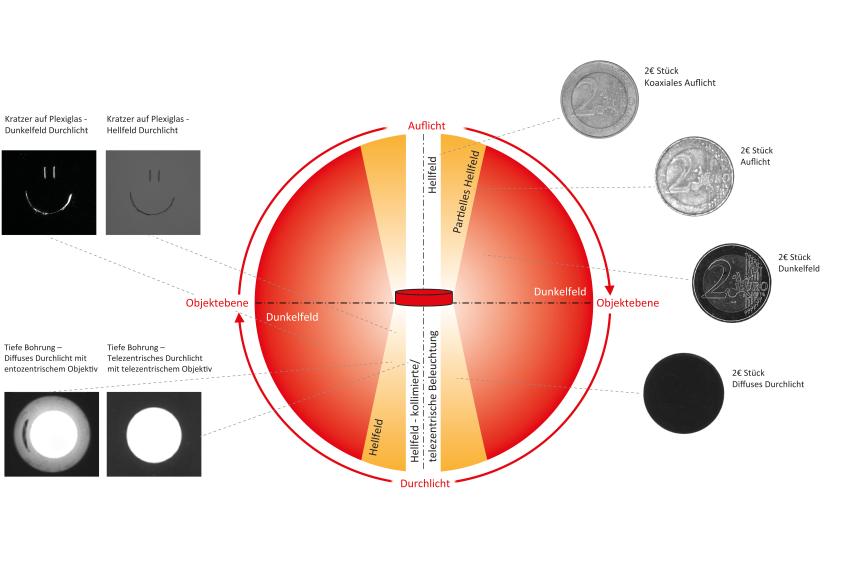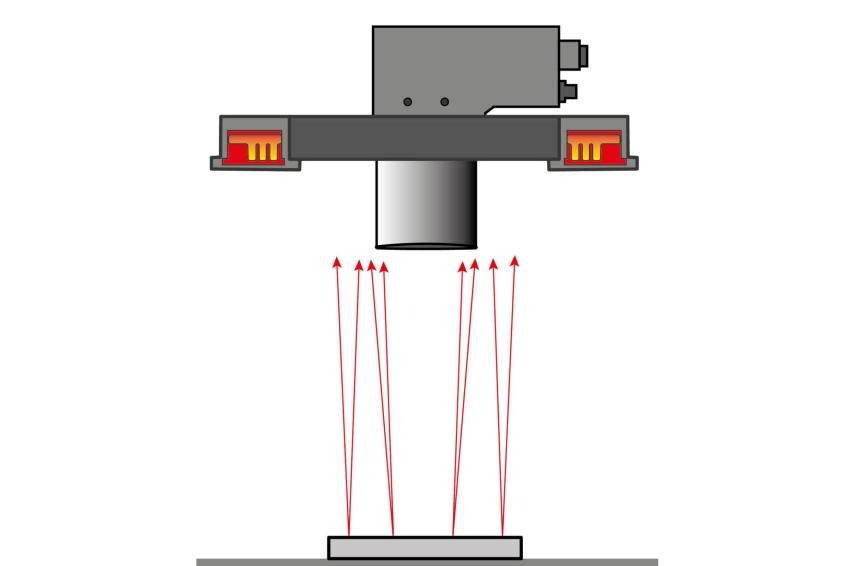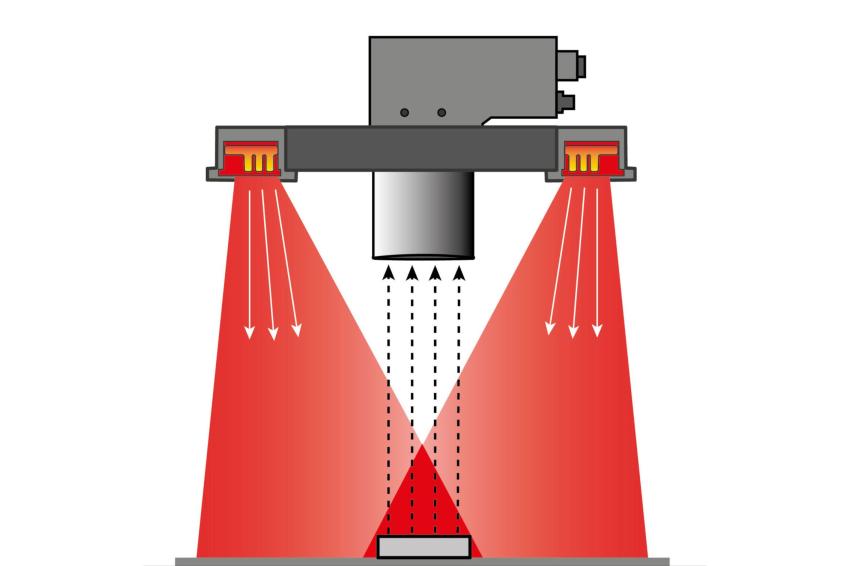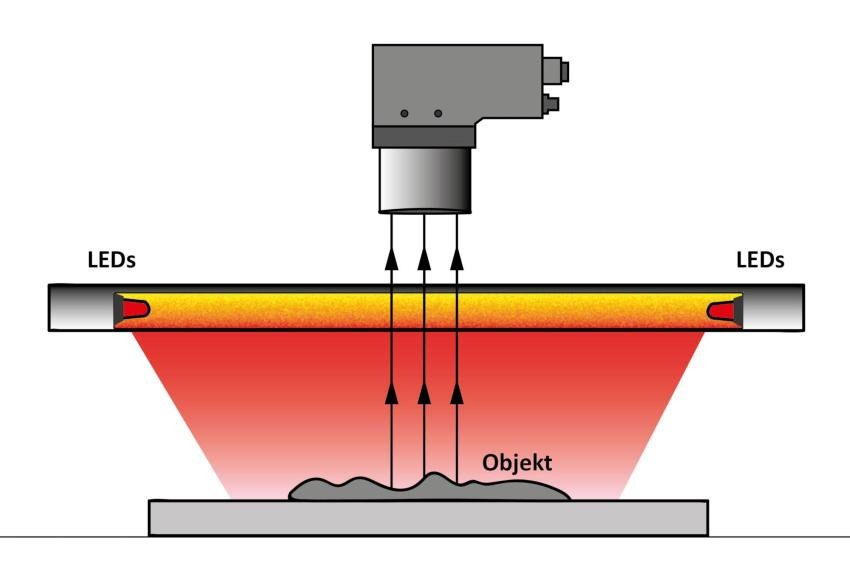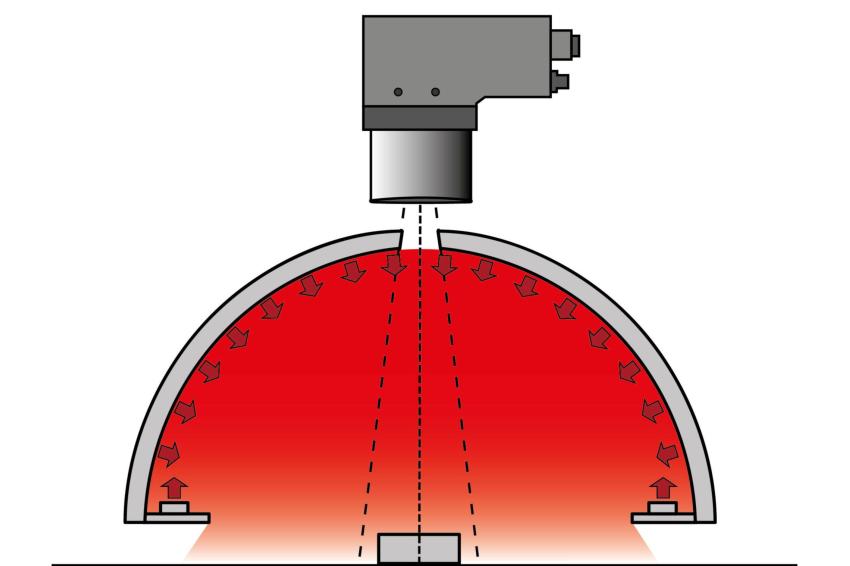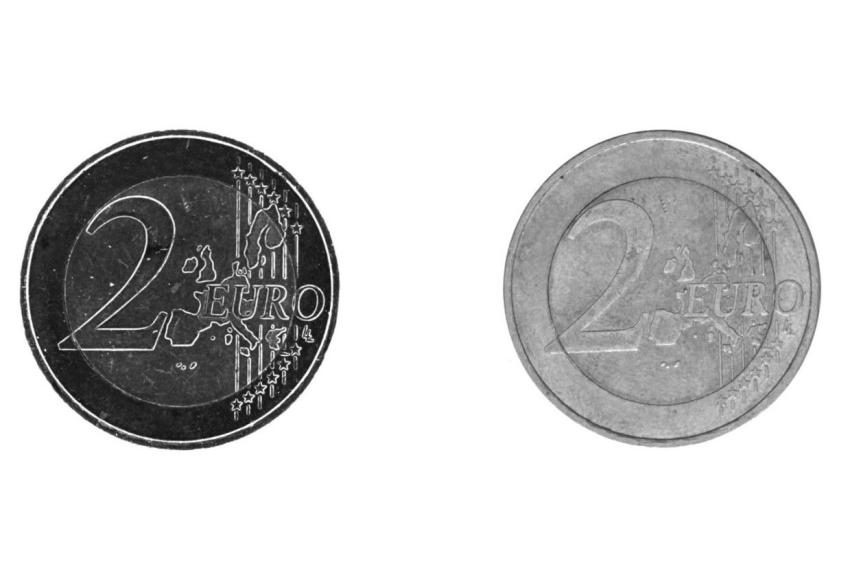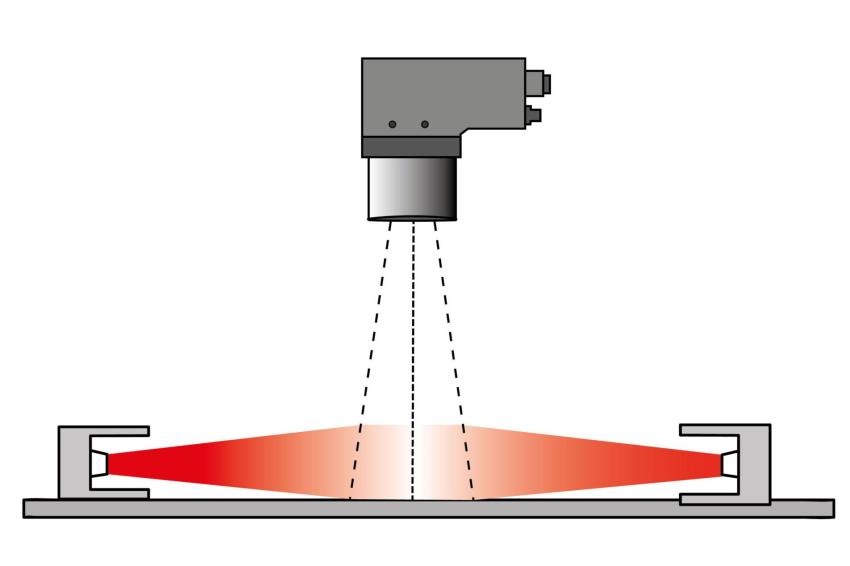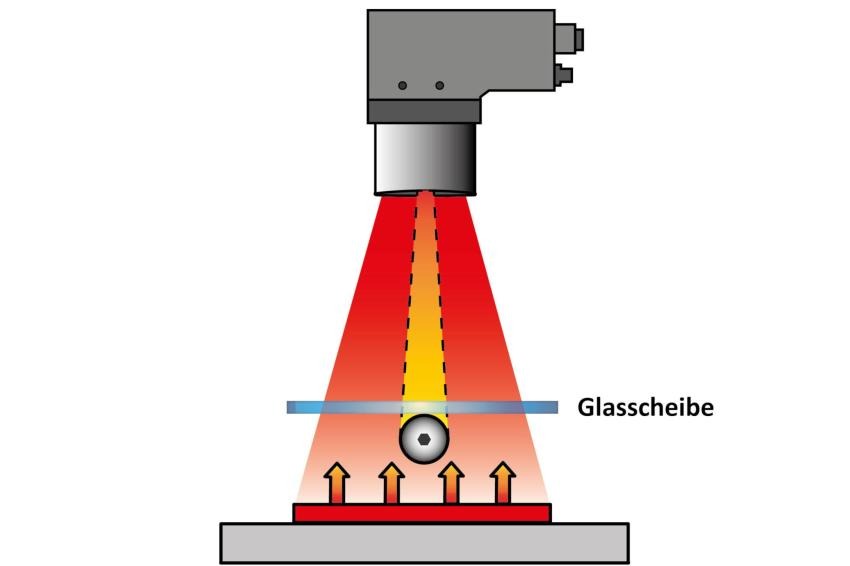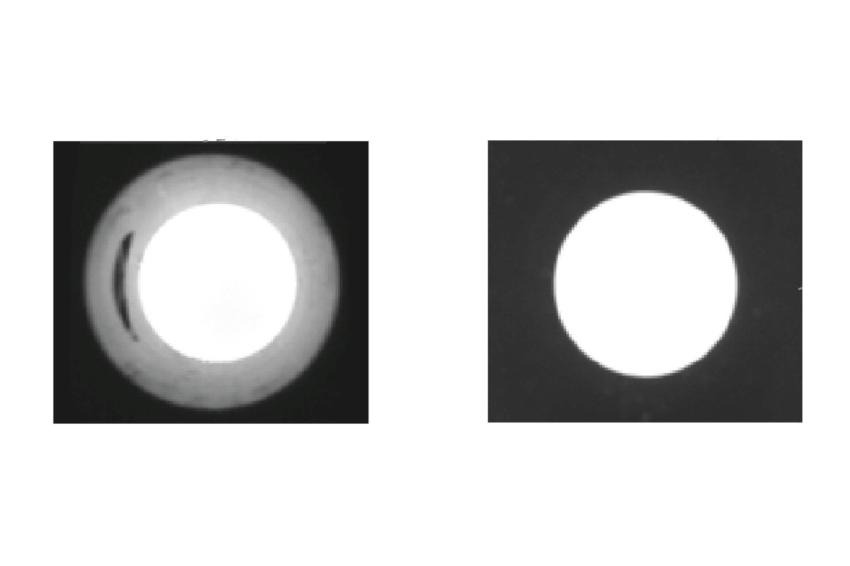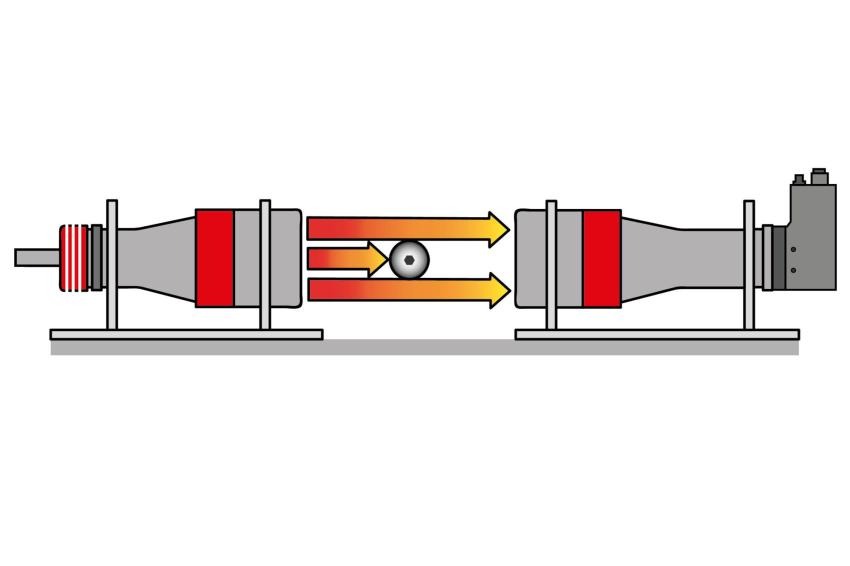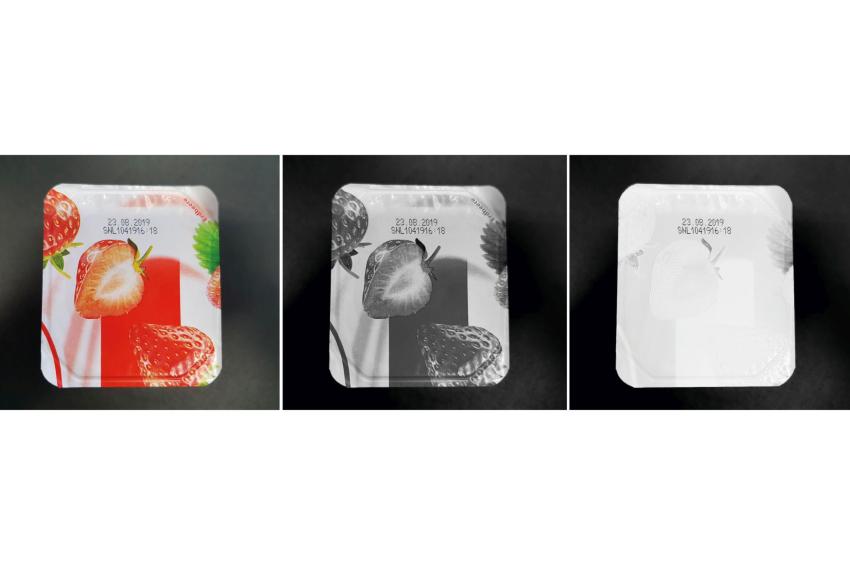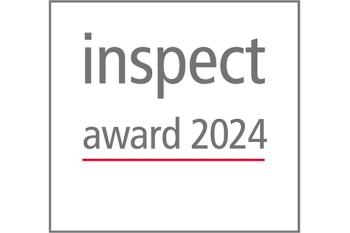Why lighting matters when using camera systems
08.08.2023 - In view of the large number of lighting technologies available for the use of camera systems, the search for a solution is not always easy. Reason enough to deal with this topic.
Although the areas in which cameras are used are extremely varied, the aim in every application is to check specific object features. This is only possible with an image that is realized by the appropriate lighting technology. In relation to a specific application, the lighting has a percentage of approximately 70 percent in the success of a solution.
There is no standard recipe for the correct lighting, but basic knowledge of the subject is certainly helpful.
Types and directions of lighting
A distinction is made between incident lighting and transmitted lighting.
- Incident lighting: light source above the object plane
- Transmitted lighting: light source below the object plane
For incident light and transmitted light, a bright field, partial bright field or dark field is generated depending on the angle of entry of the light beams onto an object or object plane.
Lighting techniques and their fields of application
With regard to lighting techniques, there are many different solutions for incident light and transmitted light. This is one of the reasons why camera systems are suitable for flexible use in a whole range of applications. The most commonly used lighting techniques and their potential areas of application are presented below.
Incident lighting
For incident light, the following lighting techniques are available, among others
-
coaxial lighting
-
high diffuse incident lighting
-
dark field lighting
Coaxial lighting
In this technique, the light is projected onto an object/surface parallel to the axis of the camera optics. Since LEDs or LED arrays are used here, the solutions sometimes integrate a diffuser in front of the light source in order to achieve the most homogeneous light distribution possible on an inspection surface. The light is emitted directly onto the object surface.
This lighting technique is particularly suitable for test objects with a flat or smooth, reflective or shiny surface. Examples: Testing the object diameter on washers or checking the completeness of contacts on electronic components.
IPF Electronic’s portfolio of auxiliary lights for cameras is wide-ranging, so that there is a suitable solution for almost every task. For example, the LED ring light ER948170 (white light) is suitable for coaxial lighting. The ring light has a very small angle of beam spread of 20 °. Comparatively more compact is the ER430170 (white light), whose LEDs also have a high luminous intensity and which can be attached directly to a camera lens.
Highly diffuse incident light illumination
Dome illumination provides very uniform, highly diffuse illumination of a test object. Dome illuminators such as the EE500170 from IPF Electronic are particularly suitable for more complex reflective objects such as foils, crown caps of bottles or data carriers (e.g. Blue-Rays, DVDs). A particularly flat version of this light up is the AO000530.
Dark field lightingDark field lights are usually positioned at a very short distance from the test object and consist, for example, of flat ring lights, line lights or spotlights. This type of light is often used for the detection of defects on object surfaces (e.g. scratches or grooves) or for the inspection of engravings. Dark field illumination can be realized, for example, with the EF750170 LED ring light (white light). The EL107170 LED line light (white light) is also suitable for dark field illumination, whereby a total of four of these line lights must be arranged rectangularly around the object plane.
Transmitted light lighting
In the case of transmitted light or backlight lighting, a distinction is made primarily between the following lighting techniques:
- Simple transmitted lighting (diffuse area light)
- Telecentric/collimated lighting
Simple transmitted lighting and telecentric/collimated lighting
With transmitted lighting, an object under test is illuminated from below or from behind in such a way that the rays of the light source are directed toward the camera optics.
In this way, a kind of shadow image of the test object can be created, with the object background visible as a bright area in the camera image display. This lighting technique can be used to inspect objects for the presence or absence of features (e.g., punched holes or bores), for example, without placing high dimensional demands on the inspection result. Depending on the requirements of the inspection task, light sources with diffuse lighting are recommended for transmitted lighting, such as the ED1E0170 LED area light (white light) or the ED250170 (white light).
In transmitted light, telecentric lightings provide an exact image of test objects that are largely free of distortions. Therefore, these are used especially for exact measuring tasks.
For this purpose, ipf electronic offers the LED spotlight AO000480 in an aluminum housing with a front screen made of glass.
Authors
Christian Fiebach, General Manager at IPF Electronic
Tobias Gelzhäuser, Produktmanagement Kamerasensorik at IPF Electronic
Martinus Menne, Freelance Journalist

